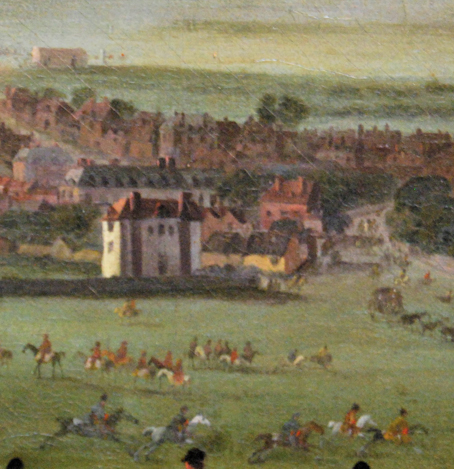Today, we call the vast area of rolling green landscape which surrounds the town “Newmarket Heath”. It sounds local and familiar, “the Heath”, where local people appreciate the clean space to roam, exercise or picnic after the serious business of training some 3000 racehorses has finished for the day. The number of horses-in-residence varies according to the season. The Heath is said to be the largest area of cultivated heathland in the world.
The Jockey Club Training Grounds (circa 2,500 acres) are divided into two areas, known as “Bury Side and “Racecourse Side”, set on either side of Newmarket.
Spread through this landscape around the town, are two world-class racecourses, numerous leading stables and studs and world-class gallops. These are attended by world-leading equine veterinary hospitals, excellent veterinary staff and farriers and many horse-related businesses. In short, this is the unique Newmarket Equine Hub, which underpins the local economy and informs international veterinary research.
In the larger scheme of things all of this is relatively new and only came about gradually after the arrival of King James I in February 1604. The Stuarts loved the, then, wildness of Newmarket Heath and the numerous sporting opportunities it provided. King James particularly enjoyed hunting and hawking.
Twice-yearly royal visits were scheduled in spring and autumn. Newmarket became the unofficial second capitol of the country for a few months each year, where the King enacted State business and held Court, as well as enjoying a “holiday” on the Heath.
Travelling in Britain at that time presented many dangers and challenges. Most roads (then just tracks) turned into quagmires after heavy rain, or rutted trails after drought or icy cold. The weather limited travel on land until the 19th/20th centuries
Although highwaymen were a very real danger for many travellers, monarchs and nobles were well-guarded. Of course, wherever the King went the Court, tradesmen and many “hangers-on” also followed. Newmarket itself was very small so, although the higher nobles secured their lodgings in town, everyone else had to camp on the Heath. In later times many grand properties were built nearby as the stables and studs of the influential and wealthy sprang up.
Drawings and paintings of the area from the 17th and 18th centuries, show the small town surrounded by a vast wilderness of grass and scrub heathland, stretching out for miles in every direction. Newmarket is still recognisable and the direction from which the view is being presented known by locating the spire of St. Mary’s Church and the tower of All Saints Church.
An earlier article in this series established that Newmarket is an ancient place, with local archaeology demonstrating a variable level of human presence in the area from the Stone Age onwards. The free-draining soil permitted an important path, The Icknield Way, to run along the chalk belt between fen and dense forest, stretching from the north Norfolk coast into the south of England.
Due to Newmarket’s plentiful fresh water sources within the dry landscape, groups of people arrived during the Bronze Age, Iron Age, the Roman occupation, the “Dark Ages” and throughout the Middle Ages, long before the reign of the Stuart Kings, which we usually hear about most when people consider Newmarket’s long history.
However, Newmarket Heath itself is a landscape with a special ecology and parts of it have been declared a “SSSI” (Site of Special Scientific Interest). Many rare species have found a home there.
History
Newmarket Heath – An Enduring Landscape

